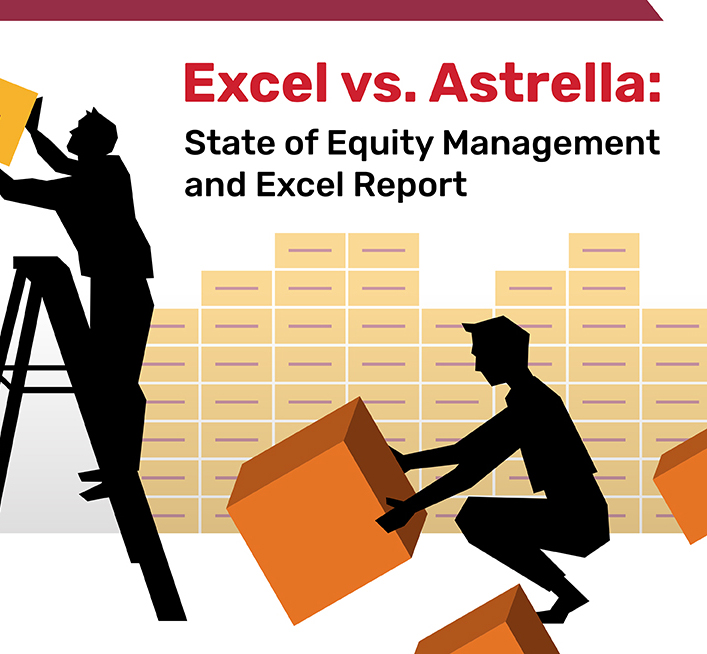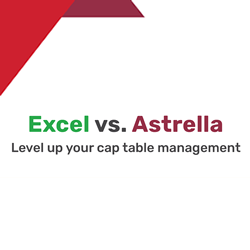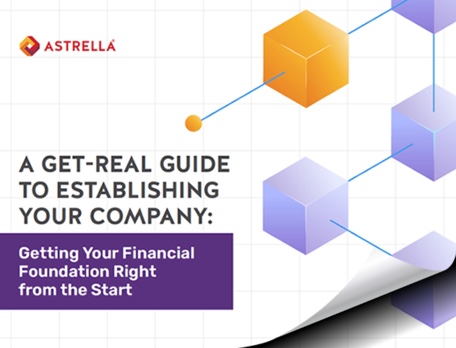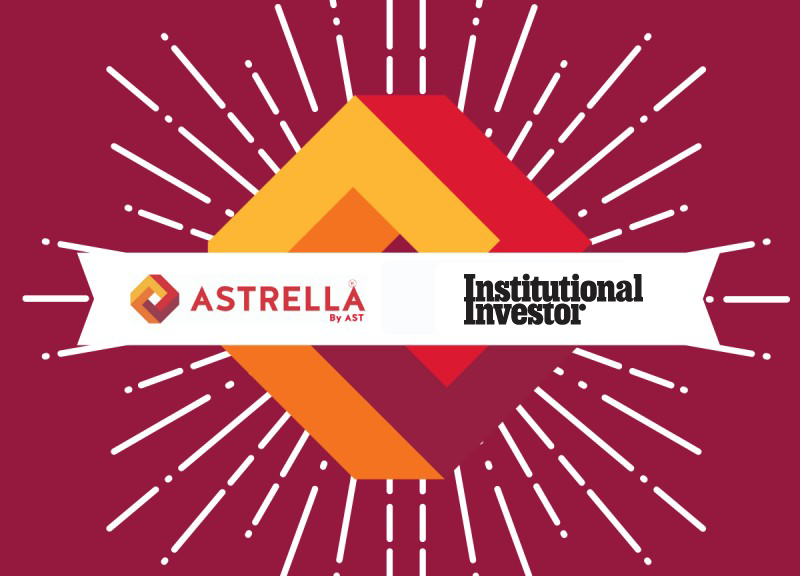A capitalization table, or cap table, is necessary for any startup or business as it helps to organize and display the company’s equity ownership. It also helps track things like convertible securities, stock options, and stock compensation grants. Ensuring your cap table is well-maintained, organized, and clearly defined will accurately represent the company’s current market value, who owns what amount of shares, and the overall percentage of the proportion of ownership. With all of this important information being input into one place, it’s important to take the time and effort to ensure proper cap table management.
Defining Private Equity
Private equity is essentially the investments of equity ownership made in private companies. These capital investments are made into companies that are not publicly traded. Many investors seek out private equity funds as their returns are better than those from public equity markets. Private equity investments typically come from individuals with high net worth or firms looking to acquire control over public companies in order to transition them to private.
Types of Company Equity
There are two main types of equity offered by private startup companies. These are:
- Common Stock: Given to many founders and staff, this is the most fundamental type of stock.
- Preferred Stock: The main recipients of preferred stock are the investors who pay a premium share price. In return, these stockholders will receive first payment in the event of a liquidity crisis or bankruptcy.
Types of Equity for Company Employees
Some companies choose to offer employee stock options, providing employees with the opportunity to acquire common stock shares at a predetermined price. To be eligible to buy their shares, or exercise their options, employees must reach specified milestones, or serve within the company for a certain amount of time. Some equity plans will permit early exercising, which means employees can exercise their options right away. There are two types of employee stock options:
- Non-Qualified Stock Options: Provided to contractors, consultants, overseas workers, and later-stage firm personnel, an NSO must be exercised and sold with applicable taxes.
- Incentive Stock Options: Most often given to employees, ISO holders don’t pay taxes when obtaining grants or exercising options, with the exception of the Alternative Minimum Tax, if applicable.
How Private Equity Works in a Company
The startup equity is based on the assumption that a company’s participants, including staff and investors, deserve an ownership interest. How much they receive is dependent on timing, participation, commitment, and firm value at the time of stock distribution. Founders would obviously earn the most due to initial ownership.
The earlier the investor, the greater the stock they earn since contributions would be proportionally bigger compared to the company’s early value. Employees who help in launching a firm would also have more ownership than those hired later. These funding phases affect equity distribution and, as fundraising rounds proceed and finances change, the way stock is allocated changes, as well.
Allocation of startup equity will vary depending on variables such as time, company model, industry, executive decisions, and the number of stakeholders. There’s no set method for distributing equity within a company, but there are some patterns and numbers to help determine the stock allocation within a typical company.
Determining the equity value and how to distribute equity in a company requires knowledge of the private equity value. The specific factors that help determine the value of equity include:
- Post-Money Valuation: This depicts the overall worth of the business after an investment round. Adding the amount of fresh equity with the company’s worth before an investment round, also known as pre-money valuation, will help you determine the post-money valuation.
- Last Preferred Price: The most recent investment round for a business results in investors paying the latest preferred price for a single share, often used as a benchmark to determine the likeliehood of a company’s success.
- Number of Options in a Grant: It goes without saying, there are as many possibilities in a grant as there are alternatives.
- Hypothetical Exit Value: This is the value at which a firm may potentially exit, or, in other words, the amount of money it would bring in should it be sold. For startups, this information is typically not available right away, but seeking comparable businesses to see how they’ve operated in the past can help create a rough estimate.
- 409a Valuation or Strike Price: The strike price is the cost per share associated with exercising your options. In order to reach the strike price, the most recommended 409a valuation is used, and a firm or software can be used to have it done.
Who Receives Equity in a Company?
Equity distribution in a company will depend on how the company is set up. The equity is often shared between founders and co-founders, workers, outside investors, and business investors.
- Founders: Equity for an owner is simple for companies with only one founder. For those who also have co-founders, proper equity division is necessary. Creating a business that is successful in the long-term requires open and frequent communication with co-founders. Risk, amount of commitment, and the creativity each co-founder brings are important considerations when discussing how to divide stock. Common equity distribution strategies include equal splits, like 50-50 or 33-33-33, or senior controlling partnerships that provides one founder with a larger interest, like 60-40.
- Employees: Many professionals find having a stake in the business they work for motivating because the success of the business may lead to a personal, financial advantage. In order to allocate equity to employees, the founders must determine how much equity they’ll give away, a vesting schedule determining when employees can exercise their shares, and the types of shares to grant. If a business decides to grant employee stock, it must make sure employees are educated on how to benefit from it. The employee equity should encourage workers to remain with the company, contributing to its success. The amount of equity offered to employees will usually depend on expertise, contribution, employee equity pool, and the business’ financing timeline.
- Investors: Any investors in your company, whether angels, venture capital firms, or family members, need to have a piece of equity. An investor who invests in a startup is essentially taking on investment risk in the hopes of making a profit. An investor may receive a different amount of equity, based on the trasaction size and business valuation at the time of investment. When proposing and arranging investments, equity discussions should take place if the desire is to raise money from outside investors for business expansion.
Advisors: Early-stage businesses will often have an advisory board comprised of seasoned entrepreneurs and industry experts who help with strategic guidance, and these advisors are sometimes paid with stock. There are no set rules for distributing shares to advisors, but many businesses offer between 0.2% and 1% of their shares. Establishing expectations with advisors up front is essential to these relationships so they have an understanding of the expected commitment level of them in return for the amount of stock you provide.
Private Equity vs. Venture Capital
Oftentimes, private equity gets confused with venture capital – and vice versa. Although they are both generally involved in cap tables, they are quite different. Which is included in your cap table will depend on what level your company is at, from new startup to large, mature business.
Private equity is most commonly a group of investors that are putting their focus on companies that are already mature. They may often invest in a company that is under distress so they can buy it out, improve operations, then sell the company for a profit.
Venture capital, on the other hand, is typically from investors during a company’s startup phase. While it is a form of private equity, it’s reserved for smaller companies with excellent growth potential. It’s a much riskier investment since it’s not a guarantee of what a company will turn into, but it could end up providing a greater return on investment.
How Private Equity Applies to Cap Tables
Private equity ownership needs to be managed properly in cap tables. These investors need to understand and see the company’s value growth or change from the time of purchase. The cap table can also provide them with a profitable exit strategy, whether they need to resell the company, turn into an initial public offering, or different option. All of this applies to any form of private equity ownership as it’s important for investors to be able to visualize business growth and profitability.
Managing Private Equity in a Cap Table is Easy with Management Software
From large corporations to small businesses, managing investments and stock ownership are essential. Attempting to do this on your own is possible, but it leaves open the possibility of mistakes, disorganization, and even potentially turning away potential future investors. Tracking any form of investment, including private equity, is easy when you use the right cap table management software like the one you’ll find from Astrella.
Contact our team today to request a demo.

Tom Kirby
Tom Kirby serves as the Head of Global Sales at Astrella. With more than 20 years of experience in sales and business development, he is dedicated to fostering strong client relationships and assisting both private and public companies in understanding and effectively communicating their value.
































































































































